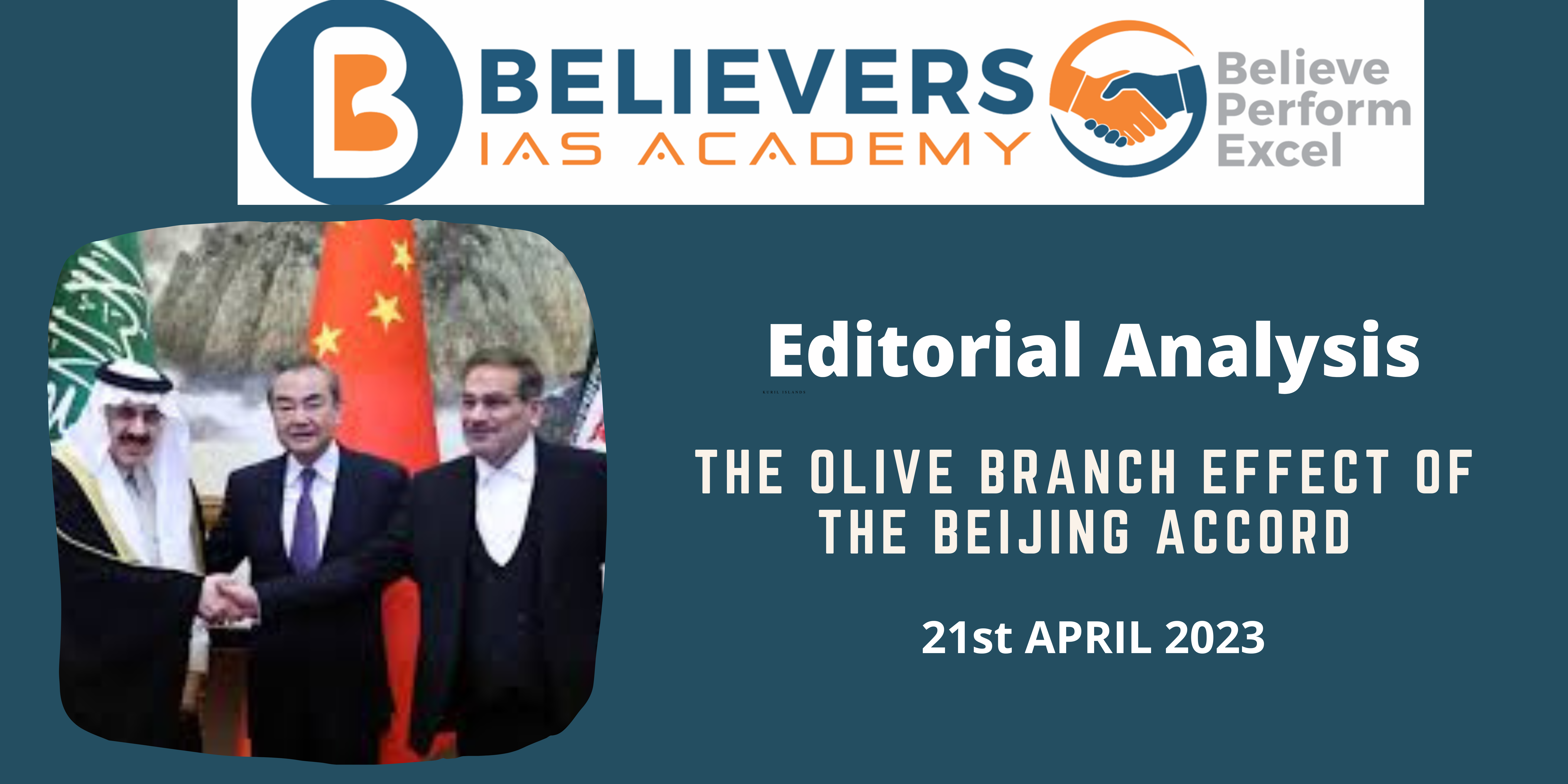The Olive Branch Effect Of The Beijing Accord
Context:
Just over a month after the Beijing Accord reestablished ties between Iran and Saudi Arabia, the regional landscape is filled with ministers and diplomats rushing from capital to capital to discuss plans to strengthen political and economic cooperation.
Points to Ponder:
- Iran and Saudi Arabia have reestablished diplomatic relations and are exploring steps to boost political and economic cooperation. This involves the establishment of embassies, the operation of direct flights, and the facilitation of visa issuing.
- Both countries’ officials have restored diplomatic and consular missions that had been closed for more than seven years.
- Saudi and Omani diplomats have been in Sanaa discussing the terms of a ceasefire in Yemen, with a truce reportedly reached in early April that includes a ceasefire, prisoner exchange, reopening of Sanaa airport, free access to Hodeidah port, lifting of the Taiz blockade, and reunification of the Central Bank.
- The next round of talks will focus on the removal of all foreign soldiers, the formation of a new political order, and the establishment of a unified state. These discussions will take place within Yemen.
- Syria’s President, Bashar al-Assad, has been welcomed in Oman and the UAE, and the Syrian Foreign Minister has visited Egypt and Saudi Arabia.
- Following the Saudi-Iran agreement, Assad travelled to Russia and the United Arab Emirates, signalling the end of Syria’s 10-year diplomatic isolation.
- Russia is seeking to reconcile Syria and Turkey, but Syria demands a complete departure of Turkish forces from northern Syria.
- The area looks to be shaking off the yoke of the United States and making foreign policy decisions independent of American aspirations.
- Saudi Arabia has joined the Shanghai Cooperation Organisation as a “dialogue partner” and wishes to join the BRICS. It is diversifying its suppliers and has acquired Chinese technology for the production of its missiles.
- Iran already has a significant defence, energy, commercial, and logistical links with Russia and China. It is essential to the Belt and Road Initiative, and it is collaborating with Russia to fill gaps in the International North-South Transport Corridor.
- These developments point to two scenarios: a West Asian cooperative order based on diplomatic contacts among regional governments, and a wider order including Eurasia and the Indian Ocean that enables regional states to pursue their interests through a variety of interactions and alignments.
Similar Topics for more details
Saudi Arabia’s Quest for strategic autonomy
Diplomacy, With A Change In Terms Of Reference




